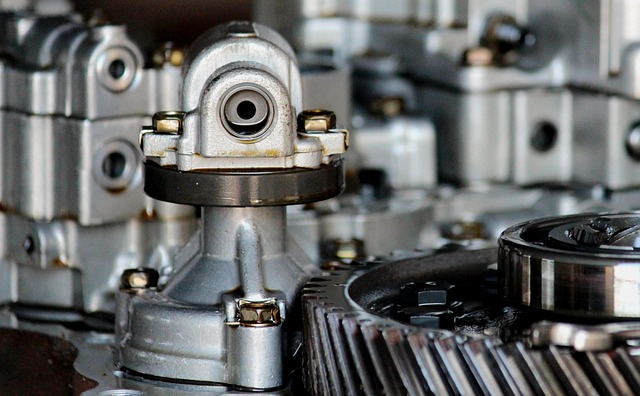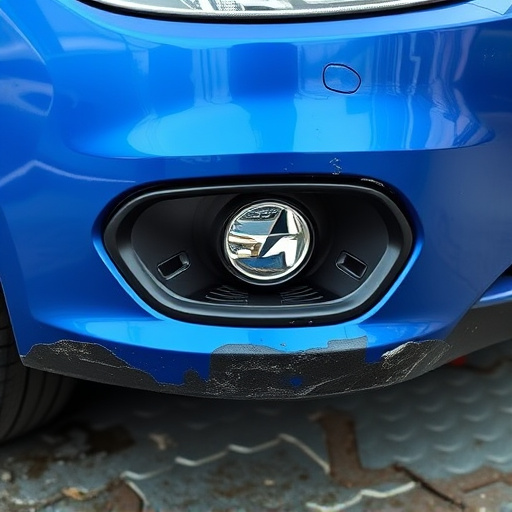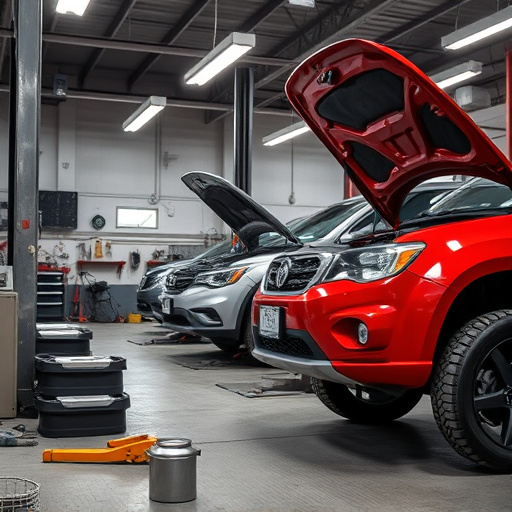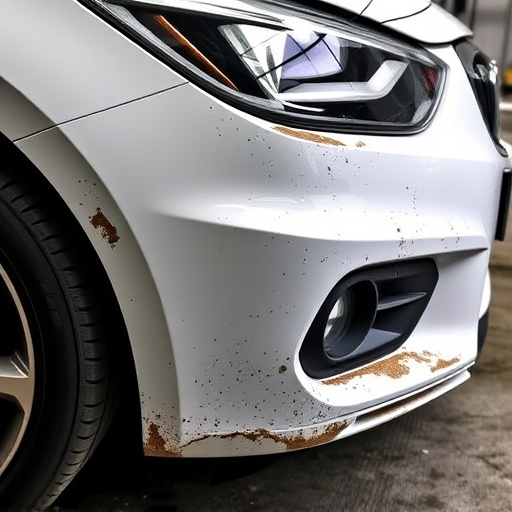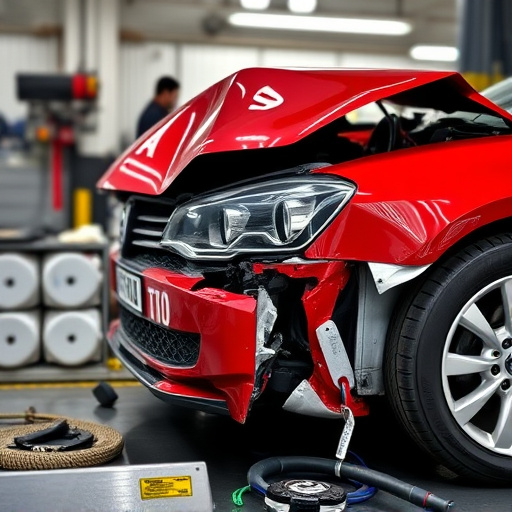Water-based paint collision repair is gaining popularity due to its reduced environmental impact and superior performance compared to solvent-based paints. This eco-friendly alternative minimizes volatile organic compound (VOC) emissions, thereby lowering air pollution and greenhouse gas contributions. It offers improved durability, faster drying times, and easier cleanup, streamlining the process for car bodyshops while ensuring a cleaner work environment. Advancements in water-based paint technologies make them a viable choice, aligning with stringent environmental regulations and consumer demand for sustainable solutions in vehicle damage restoration.
In today’s environmentally conscious world, the impact of construction practices on ecosystems is under intense scrutiny. This article delves into the critical role of environmental regulations in promoting sustainable solutions, specifically focusing on water-based paint repair. Understanding the unique properties and ecological footprint of water-based paints, we explore the rise of stringent environmental standards for industrial coatings. By examining compliance strategies, this piece highlights the benefits and practical implementation of water-based paint repairs, offering a promising path towards minimizing the environmental collision in the construction sector.
- Understanding Water-Based Paint and its Environmental Impact
- The Rise of Strict Environmental Regulations for Paints
- Benefits and Implementation of Water-Based Paint Repair in Compliance with Regulations
Understanding Water-Based Paint and its Environmental Impact
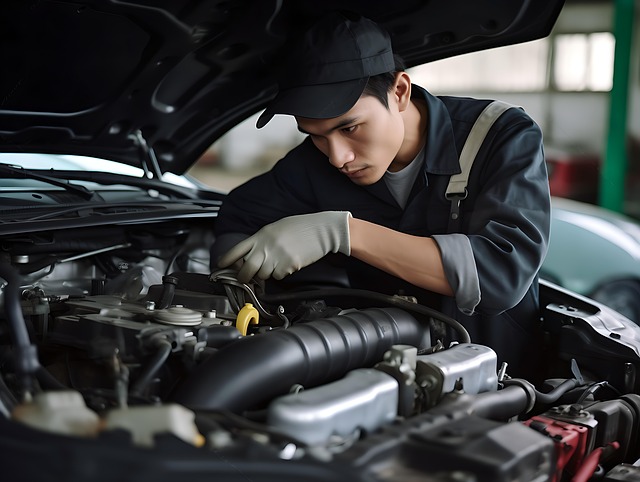
Water-based paint has gained popularity due to its reduced environmental impact compared to traditional solvent-based paints. This shift is particularly notable in industries like vehicle restoration, where auto glass repair and frame straightening are common practices. The key advantage lies in water-based paint’s lower volatile organic compound (VOC) emissions, which significantly reduce air pollution and greenhouse gas contributions.
These environmental benefits extend beyond mere emission reduction. Water-based paints offer superior durability and adhesion, making them a practical choice for various applications. Moreover, their fast drying time and ease of cleanup contribute to a more efficient painting process, minimizing the risk of environmental contamination during vehicle restoration or other repair work.
The Rise of Strict Environmental Regulations for Paints

In recent years, environmental regulations have become increasingly stringent across various industries, and the paint sector is no exception. This shift is primarily driven by the growing awareness of the potential ecological impacts of traditional, solvent-based paints. These paints often contain harmful volatile organic compounds (VOCs) that contribute to air pollution and greenhouse gas emissions when released into the atmosphere during manufacturing, transportation, and application. As a result, there has been a noticeable trend towards stricter guidelines and incentives for developing and adopting more environmentally friendly alternatives. Water-based paint technology is at the forefront of this movement, offering a cleaner, safer, and more sustainable solution for both industrial applications and consumer use, such as in automotive collision repair.
The rise of strict environmental regulations has prompted manufacturers to reevaluate their practices and formulations. This has led to significant advancements in water-based paint technologies, making them a viable alternative to traditional paints in various sectors, including car paint services. These new regulations not only push for reduced VOC emissions but also encourage the use of renewable resources, biodegradable components, and improved disposal methods for paint waste. In the context of automotive collision repair, where quick turnaround times and high-quality finishes are essential, water-based paints have emerged as a game-changer, promoting efficiency while mitigating environmental impact, thereby aligning with the evolving expectations of both regulators and consumers alike.
Benefits and Implementation of Water-Based Paint Repair in Compliance with Regulations
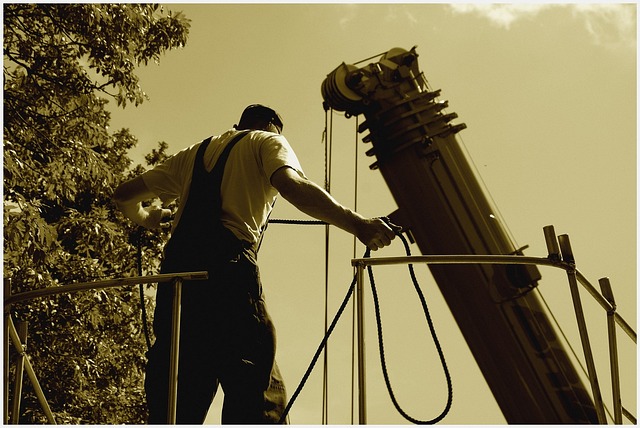
Water-based paint repair offers a sustainable and environmentally friendly solution for vehicle collision repair, aligning perfectly with strict environmental regulations. By utilizing water-based paints, car body shops can significantly reduce the release of harmful volatile organic compounds (VOCs) into the atmosphere during the painting process. This not only contributes to better air quality but also has positive implications for public health, especially in urban areas where vehicle emissions are a significant concern.
The implementation of water-based paint repair involves advanced techniques and specialized equipment to ensure efficient application and curing. Car bodywork services that embrace this method can achieve high-quality finishes while minimizing the environmental impact. Moreover, water-based paints provide excellent adhesion, durability, and color retention, making them a superior choice for both exterior and interior car body shop applications. This eco-conscious approach not only meets regulatory standards but also caters to consumers who are increasingly conscious of the environmental footprint of their purchases, including vehicle collision repair services.
Environmental regulations play a pivotal role in promoting sustainable practices within the painting industry, particularly when it comes to water-based paint. By adhering to stricter standards, manufacturers are incentivized to develop eco-friendly alternatives, reducing the environmental impact of paint production and disposal. The shift towards water-based paints offers numerous benefits, including lower volatile organic compound (VOC) emissions, less hazardous waste generation, and improved air quality. As these regulations continue to evolve, so does the need for innovative solutions in water-based paint repair, ensuring a cleaner, more sustainable future for both industries and the environment at large.
